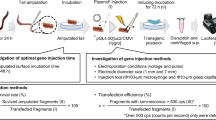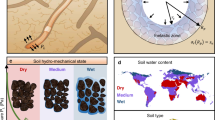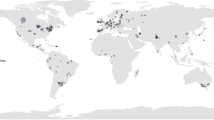Abstract
CERTAIN historical events in 1940 interested us in the possible dietetic value of the protein content of earthworms. We found that two Germans1 and two repetitive Japanese2 had shown that all the usual amino-acids produced by hydrolysis of mammalian protein were also obtained from earthworms (Lumbricus terrestris), but they gave no quantitative figures of total protein with which we were concerned and which we now report.
This is a preview of subscription content, access via your institution
Access options
Subscribe to this journal
Receive 51 print issues and online access
$199.00 per year
only $3.90 per issue
Buy this article
- Purchase on SpringerLink
- Instant access to full article PDF
Prices may be subject to local taxes which are calculated during checkout
Similar content being viewed by others
References
Ackermann, D., and Kutscher, F., Z. Biol., 75, 315 (1922).
Murayama, Y., and Aoyama, S., Yakugakuzasshi, No. 469, 221 (1921); No. 484, 482 (1922).
Author information
Authors and Affiliations
Rights and permissions
About this article
Cite this article
LAWRENCE, R., MILLAR, H. Protein Content of Earthworms. Nature 155, 517 (1945). https://doi.org/10.1038/155517b0
Issue date:
DOI: https://doi.org/10.1038/155517b0
This article is cited by
-
Foraging and spatial organisation of the European badger, Meles meles L.
Behavioral Ecology and Sociobiology (1978)
-
Effects of nine insecticides on the numbers and biomass of earthworms in pasture
Bulletin of Environmental Contamination and Toxicology (1970)



